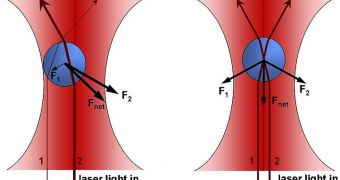A group of investigators from the Netherlands and France managed recently to develop a new system featuring rotating microscopic cylinders, which exhibit properties similar to those of communicating neurons. The achievement could have important implications for the electronics industry.
For the new investigation, researchers at the Technische Universiteit Delft (TU Delft) collaborated with colleagues from the Institut Non Linéaire de Nice, in France. The group says that the cylinders it developed could be used for a wide array of practical applications.
Certain physical properties in the newly-created system remind experts of the way nerve cells called neurons function in the human brain. These cells have specific patterns of communication, which determine their function, and also underly important human personality and behavior traits.
“Both the micro-cylinders and the neurons are 'excitable', i.e. they respond to an external disturbance by producing a pulse (e.g. a voltage) of a given, fixed size,” the Dutch group explains in a statement.
Details of the research were published in full, in the December 19 issue of the esteemed scientific journal Nature Physics. Funding for the work came from the Foundation for Fundamental Research on Matter (FOM), in the Netherlands.
But one of the most important capabilities demonstrated by the new system was the fact that its cylinders could discover the presence of microscopic particles inside liquids. In this regard, the rotating micro-cylinders acted like tiny detectors.
“This [happens] because the presence of such particles in the vicinity of a rotating micro-cylinder produces a clearly measurable disturbance in the torque experienced by the cylinder,” the group adds in the same press release.
Using this ability, experts can employ the system for detecting counting, or separating cells and other microscopic particles that are suspended in liquids. Biological samples could also be analyzed in this manner, the team behind the work believes.
“For the purposes of this study, the researchers employed optical torque tweezers. This unique instrument is capable of measuring both the force and angular momentum exerted on microscopic objects, including biological molecules such as DNA,” the group adds.
Originally called single-beam gradient force trap, an optical tweezer is a scientific instrument that works by using a highly-focused laser beam to exert opposing piconewton-scale forces of small molecules and objects.
This instrument can be used for sorting cell, for example, or even for manipulating them with extreme precision.

 14 DAY TRIAL //
14 DAY TRIAL //